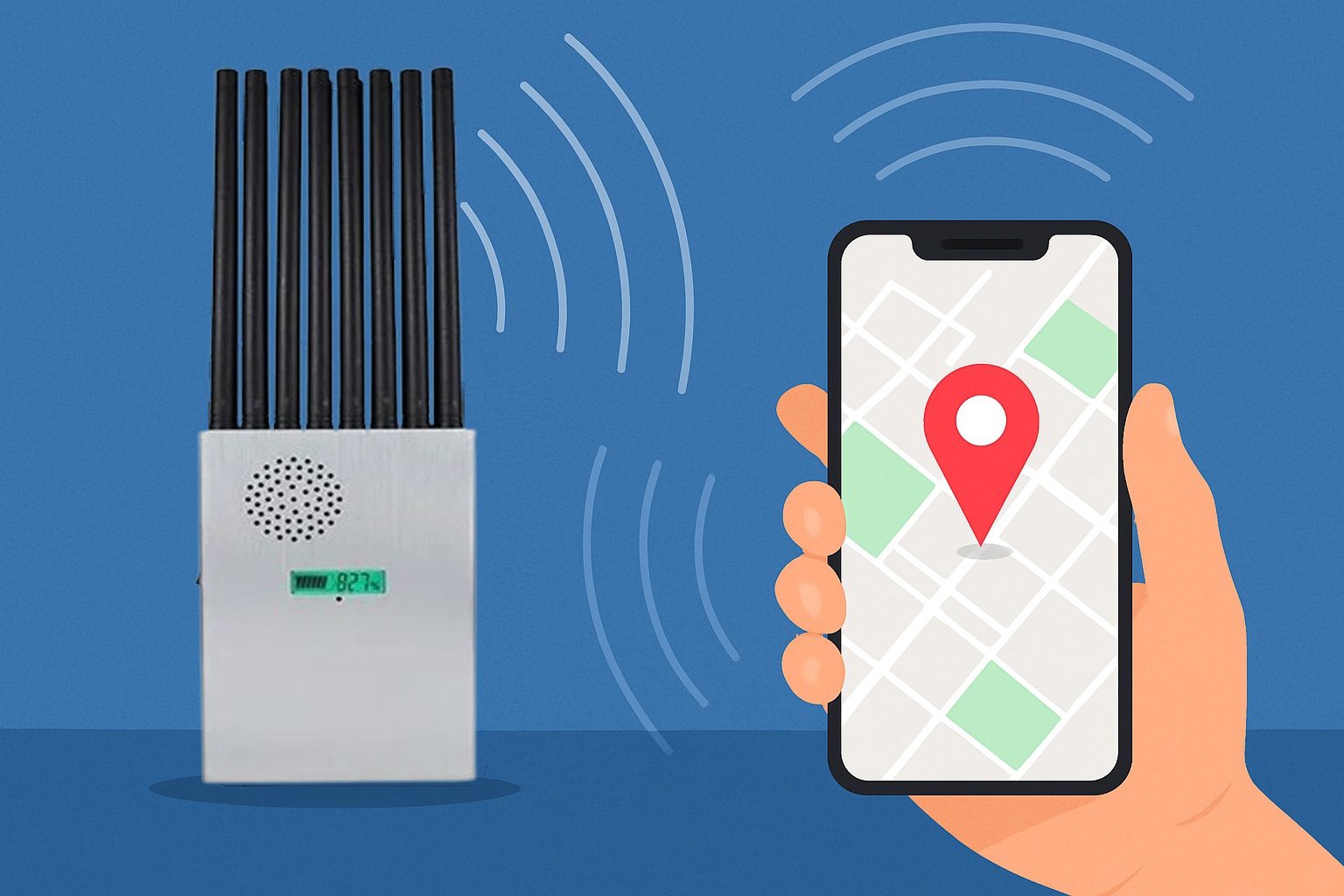With the rapid development of mobile phone positioning technology, mobile monitoring systems have gradually entered the lives of the public. Through base station triangulation, Wi-Fi positioning and even GPS satellite systems, our location is almost always exposed within the “visible” range to some extent. This technology has positive significance in finding missing persons and improving emergency response speed, but it also raises deep concerns about personal privacy. In this context, Cell Phone positioning jammer, as a technical “antagonist”, has quietly become popular and has become the focus of attention and controversy for many people.
The existence of such equipment is like a double-edged sword: it can be a weapon to protect privacy, but it can also become a tool for illegal activities. Before Russia, the United States and other countries have established a complete legislative framework, the use of mobile cellular jammers is still wandering between the edge of technical ethics and law.
What is a positioning jammer? How does it work?
Anti positioning jammer, also known as a GPS positioning jammer or a mobile phone signal blocker, is an electronic device that blocks the normal communication of the positioning system by emitting interference signals of a specific frequency. It can target different systems, such as:
- GPS jammer: Prevents terminal devices from receiving GPS data by interfering with satellite signals in the L1 and L2 frequency bands;
- Cellular jammer: Blocks the connection between mobile phones and base stations by simulating or impacting 2G, 3G, 4G and even 5G signal bands;
- Wi-Fi/Bluetooth jammer: Used to interfere with short-range wireless communications and also plays an auxiliary role in positioning systems.
These devices range in size from palm-sized to modules that can be put into cars and backpacks. Some high-end models even have directional antennas, signal strength adjustment and other functions to achieve local precision interference.
The core principle is: creating strong “noise” at the same frequency as the legitimate communication signal, making it impossible for the device to parse normal data from the base station or satellite, resulting in “positioning failure” or “loss of connection”.
Who is using the jammer? Motives vary
The user groups of jammers are very complex, ranging from the civilian field to the gray industry chain:
1. Privacy protectors
Some users hope not to be monitored during a specific time period, or to avoid smart devices tracking their daily trajectory. They use jammers not only to resist “digital invasion”, but also to resist “big data deprivation of freedom”.
2. Company executives and business people
In order to avoid exposure of business itineraries, leakage of meeting locations, and competitors obtaining dynamics, some executives carry jammers during sensitive periods to protect personal and company secrets.
3. “Technology opponents” and geek groups
Some technology enthusiasts or liberals use it as a means of research and experimentation, testing system vulnerabilities, verifying the robustness of positioning systems, etc.
4. Criminals and illegal organizations
What is worrying is that jammers are often used by illegal elements to evade police positioning, shield vehicle GPS anti-theft devices, destroy drone path control systems, and even cover up the location of the crime scene in cases such as bank robberies.
The game relationship between jammers and mobile monitoring
1. Technical “cat and mouse game”
The relationship between mobile positioning systems and jammers is very similar to “attack and defense” in network security. With the improvement of positioning algorithms and the development of AI abnormal behavior recognition, some monitoring systems have been able to detect the abnormal existence of interference signals, and even reversely lock targets through “signal loss”. But at the same time, jammer technology is also evolving rapidly, using frequency hopping, beamforming and other technologies to avoid traditional detection methods.
2. Social impact is worthy of vigilance
Technology is neither good nor bad, the key lies in the user’s intention. For ordinary users, the random use of cell phone jammers may interfere with the communication of others and even affect public safety; while over-reliance on mobile cellular jammers may cause users to fall into information islands, miss important reminders, and lose contact in emergencies.
What’s more serious is that if GPS tracker jammers become a common tool for “evading responsibility”, such as children using signal blocker to cover their location on the way to school, or spouses using them to evade tracking by monitoring systems, the original intention of the technology will be completely distorted.
Conclusion: The social value behind technology choices
Jammers are not bad things. They are a backlash response of users to excessive control of information. Their existence reflects the contradictory tension between freedom and security in contemporary society. In an era of rapid technological development, we should not only ask “what technology can do”, but also “what technology should do”.
The attitude of future society towards jammers will largely determine how we find the rational and clear middle path between privacy and security.

